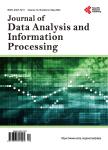Time Series Modelling with Application to Tanzania Inflation Data
Time Series Modelling with Application to Tanzania Inflation Data作者机构:Dares Salaam University College of Education Dares Salaam Tanzania Department of Economics University of Dares Salaam Dares Salaam Tanzania Department of Mathematics University of Dares Salaam Dares Salaam Tanzania
出 版 物:《Journal of Data Analysis and Information Processing》 (数据分析和信息处理(英文))
年 卷 期:2014年第2卷第2期
页 面:49-59页
学科分类:1002[医学-临床医学] 100214[医学-肿瘤学] 10[医学]
主 题:Time Series Inflation Autoregressive
摘 要:In this paper, time series modelling is examined with a special application to modelling inflation data in Tanzania. In particular the theory of univariate non linear time series analysis is explored and applied to the inflation data spanning from January 1997 to December 2010. Time series models namely, the autoregressive conditional heteroscedastic (ARCH) (with their extensions to the generalized autoregressive conditional heteroscedasticity ARCH (GARCH)) models are fitted to the data. The stages in the model building namely, identification, estimation and checking have been explored and applied to the data. The best fitting model is selected based on how well the model captures the stochastic variation in the data (goodness of fit). The goodness of fit is assessed through the Akaike Information Criteria (AIC), Bayesian Information Criteria (BIC) and minimum standard error (MSE). Based on minimum AIC and BIC values, the best fit GARCH models tend to be GARCH(1,1) and GARCH(1,2). After estimation of the parameters of selected models, a series of diagnostic and forecast accuracy test are performed. Having satisfied with all the model assumptions, GARCH(1,1) model is found to be the best model for forecasting. Based on the selected model, twelve months inflation rates of Tanzania are forecasted in sample period (that is from January 2010 to December 2010). From the results, it is observed that the forecasted series are close to the actual data series.



